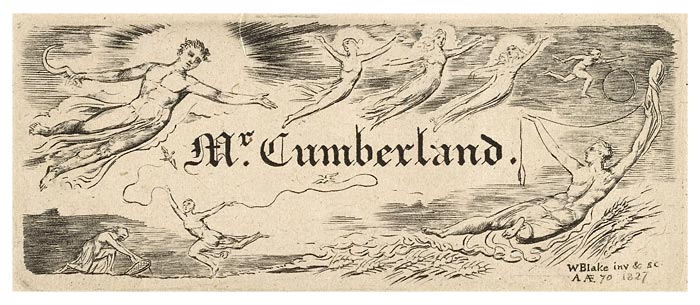
"The Little Card I will do as soon as Possible but when you Consider that I have been reduced to a Skeleton from which I am slowly recovering you will I hope have Patience with me."
–William Blake, April 1827
Blake and Cumberland's friendship dated from their youth at the Royal Academy. Cumberland became an amateur artist, reviewer, and writer on artistic subjects. His son, a student of John Linnell, was responsible for the important introduction of his teacher to Blake.
Holland House had been built about 1607 for Sir Walter Cope. By 1816 it was the home of Henry Richard Fox, third Baron Holland. It became the center of liberal political gatherings and intellectual and cultural activity, where aspiring artists and writers mingled with government and political figures. Cumberland used a rich tonal palette and dynamic contours to capture the building's elaborate horizontal facade.
Blake's plate for Cumberland's card was delivered by his widow.
